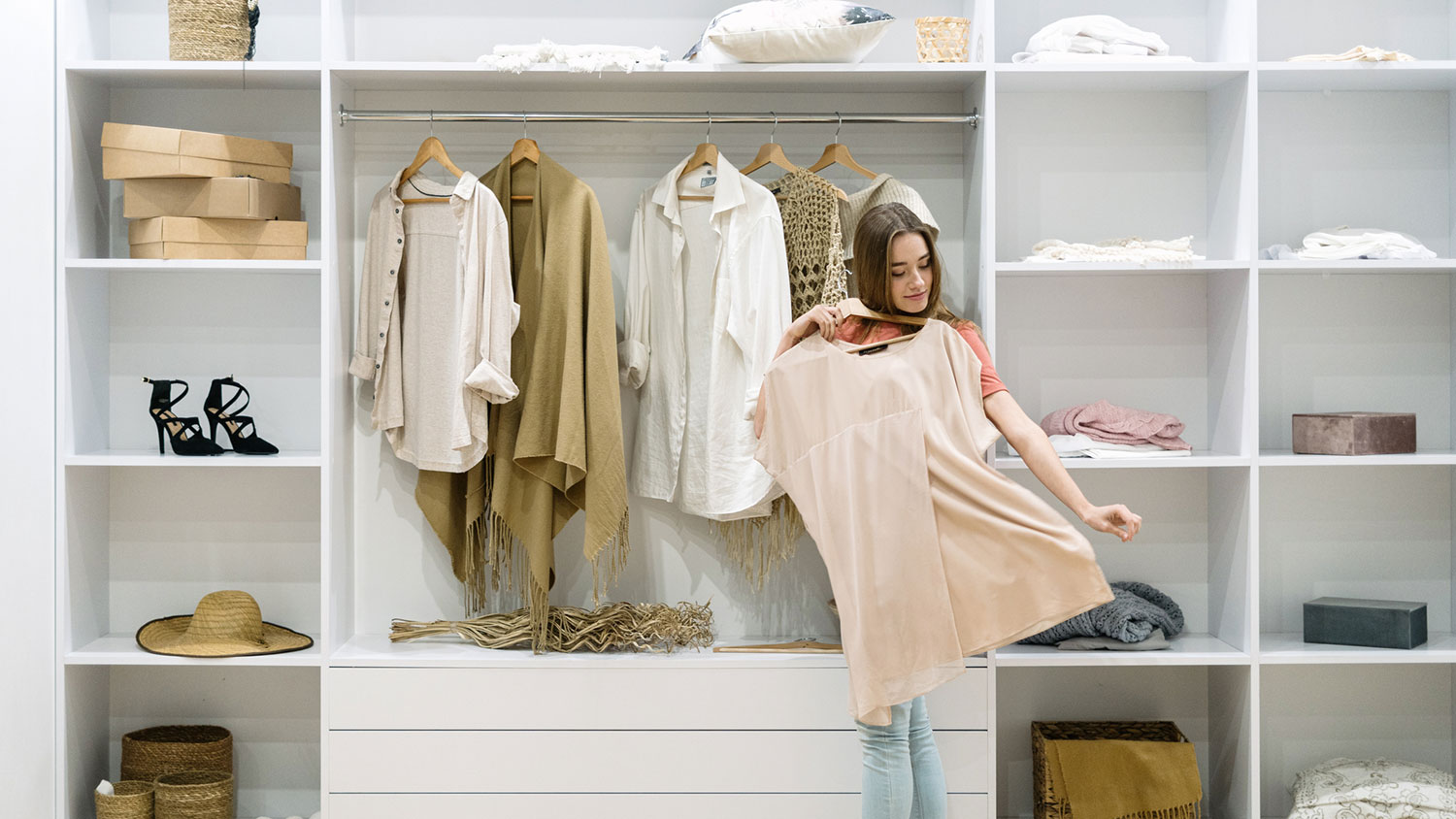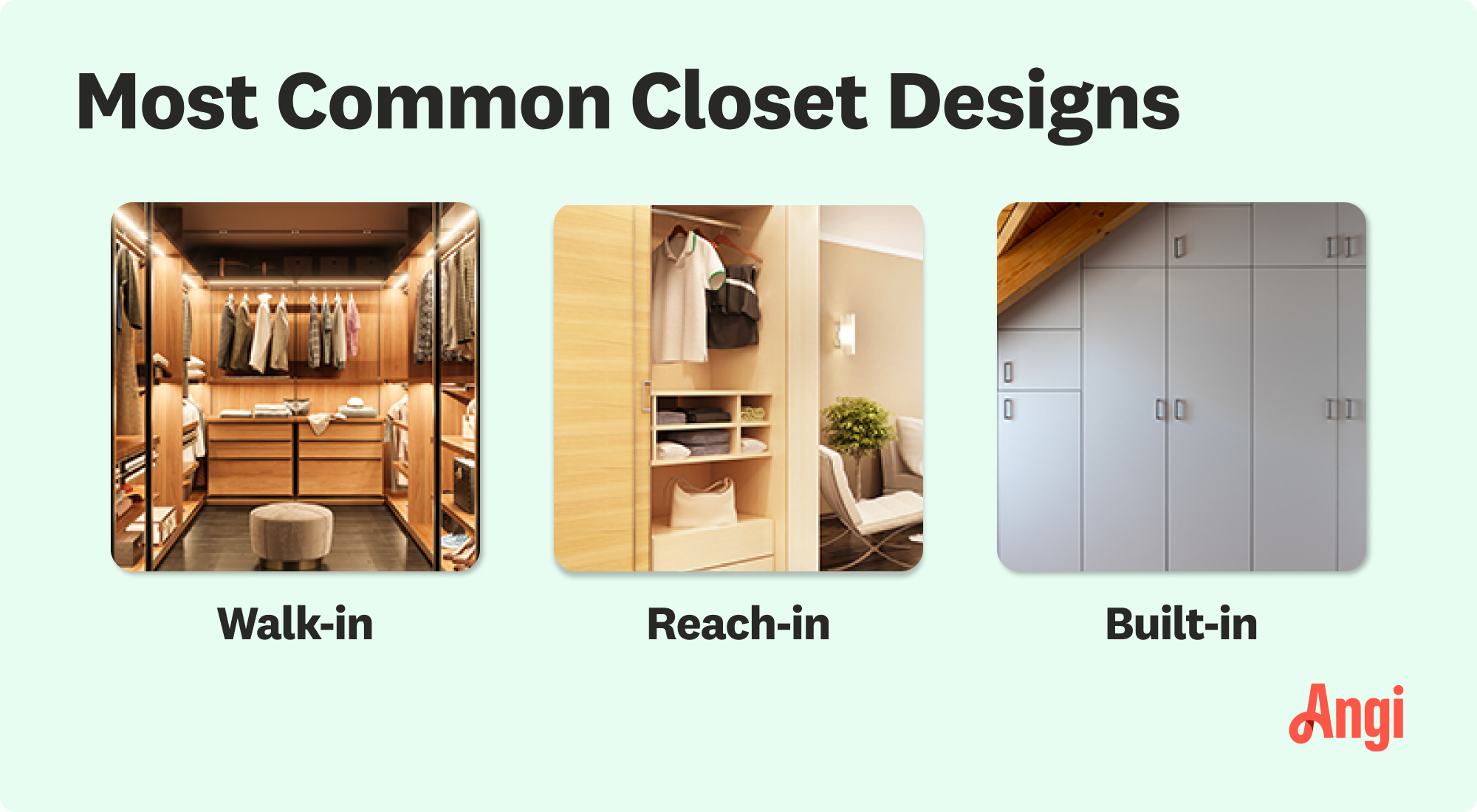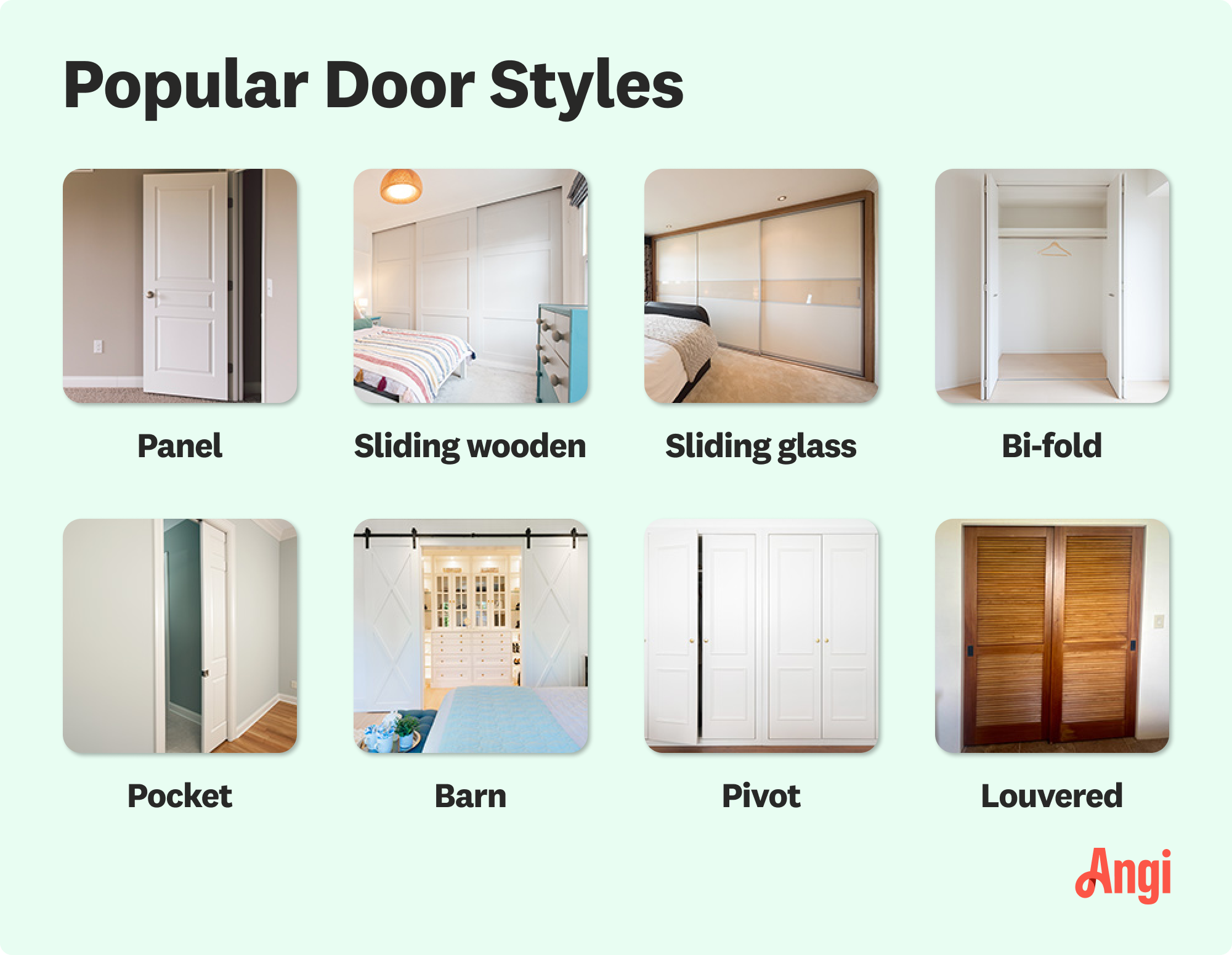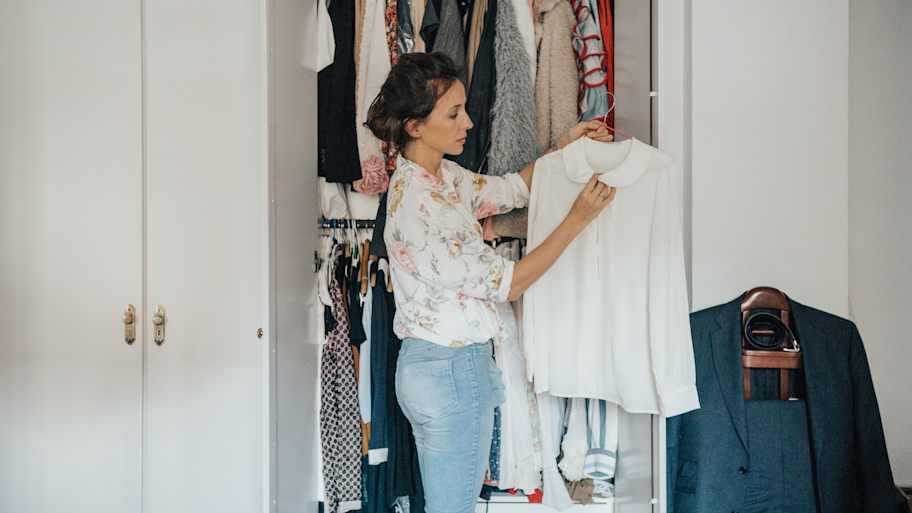
Discover the cost to hire a professional closet organizer, including average prices, cost factors, and tips to help you budget and maximize your investment.
The cost to build a custom closet is $2,154 on average, but it can cost between $1,081 and $3,258, depending on the size of your space and the features you want.


Building a custom closet costs $28 to $40 per square foot, depending on the finishes and features you choose.
The most common styles of closets include walk-in, reach-in, built-in, and standalone.
Custom closet renovations have an average ROI of 50% to 60%.
Popular features include customized doors, lighting, shelving, drawers, and wall finishes.
Changing the structure of your home to add a closet often requires a permit and the guidance of a professional contractor.
Building a custom closet will make your bedroom feel even more like your own, not to mention add space and style. A custom closet costs $2,154 on average, but has a wide cost range between $410 and $6,500 depending on more factors than just square footage. Learn how to budget for this project, as well as where you can save a few dollars.
The cost to build a closet is between $28 and $40 per square foot. More customized projects will cost more, while simple custom closets built into an existing space will cost less. The prices below reflect the lower end of average prices for the corresponding square footage. Homeowners can use these numbers as a base for their projects—not the final cost.
| Custom Closet Size in Square Feet | Average Cost |
|---|---|
| 12 | $340–$480 |
| 18 | $510–$760 |
| 25 | $700–$1,050 |
| 35 | $990–$1,400 |
| 45 | $1,300–$1,850 |
| 60 | $1,700–$2,400 |
| 100 | $2,000–$3,600 |

"There are many designs to choose from when building a custom closet,” says Andy Kilborn, Angi Expert Review Board member and owner of Andy’s Handyman in Des Moines. “Start with your budget first and determine which design best fits that budget."
Here are the average costs for different types of custom closets:
| Closet Type | Price Range |
|---|---|
| Walk-in closet | $750–$5,000 |
| Reach-in closet | $500–$1,500 |
| Built-in wardrobe | $1,000–$5,000 or more |
Walk-in closets are dreamy and for good reason—with a walk-in, all of your clothes, shoes, and accessories have their own special place. Plus, you’ll have tons of room to get ready (and have a mini-fashion show) every morning. These closet types are often sought-after by homeowners, and installing a custom one can cost a pretty penny. Expect to pay between $750 and $5,000 for a walk-in closet, depending on its size and what materials you choose.

Your most budget-friendly custom closet option is a reach-in closet. Most homeowners pay $500 to $1,500 for a simple reach-in closet that includes shelving and hanging racks. Reach-in closets are great for those on a budget or those without the large space required for a walk-in.
A built-in closet or wardrobe cost can range considerably. Depending on the materials used and the size of your closet, closet installation can cost $1,000 to $5,000 or more. A built-in wardrobe is a great solution for homeowners who want a custom closet similar to a reach-in, but without requiring so much space.
As the saying goes, location is everything. Custom closet workers and general contractors are more expensive in large cities and isolated areas. The sweet spot for a low-cost custom closet is in suburban areas around an hour from major cities. This ensures there are plenty of contractors in the area, which tends to keep prices at reasonable levels.
The values below represent costs for a 35-square-foot closet in various U.S. locations.
| Location | Average Cost |
|---|---|
| New York, NY | $1,100–$2,300 |
| Chicago, IL | $650–$1,600 |
| Dallas, TX | $600–$1,550 |
| Spokane, WA | $490–$1,200 |
| Toledo, OH | $450–$1,050 |
| Raleigh, NC | $580–$1,450 |
| Miami, FL | $900–$1,650 |
| Pittsburg, PA | $520–$750 |
| Los Angeles, CA | $1,100–$1,900 |
| Phoenix, AZ | $600–$1,050 |
| Minneapolis, MN | $680–$1,200 |
Closets are more than hangers and shelves. Each element you add to the final project becomes its own cost, and the style matters as well. A single overhead lightbulb may cost only $120 to install, while hidden accent lighting can easily cost thousands. What you choose to add to your closet can significantly impact the final cost.
The best closet maker near you will likely be a general contractor with experience building custom closets. A general contractor charges 15% to 25% of the project cost or an hourly rate of $40 to $80 per worker per hour. There is some room for negotiation, but not much, so it’s a good idea to hire the most reputable general contractor rather than the least expensive.
If you have a specific design in mind for an elaborate closet, you can consider hiring a specialist who only builds closets. However, for the average homeowner, a general contractor will do just fine—and at a lower price.

| Door Style | Average Cost to Install |
|---|---|
| Panel Door (Standard) | $250–$450 |
| Sliding Wooden Door | $700–$1,200 |
| Sliding Glass Door | $550–$1,100 |
| Bi-Fold Doors | $400–$900 |
| Pocket Doors | $1,200–$3,500 |
| Barn Doors | $900–$1,100 |
| Pivot Door | $1,100–$2,100 |
| Louvered Doors | $400–$700 |
| Murphy Doors | $2,000–$8,000 |
While you may think of closets as the space they provide inside, a door is a necessity and, depending on the style can inflate your costs. While a pocket door can be seriously pricey to install, a standard door may not cost more than a few hundred dollars. Some of the more expensive options—like Murphy doors—add a flair to your home that a simple paneled door can’t provide.
Depending on where the closet is built, lighting may not be important. This is often the case when a closet has a window or a previously installed lighting fixture that you decide not to change. However, if additional lighting needs to be installed, it will increase the installation cost. Electricians and general contractors will be able to give accurate quotes, but you can expect a simple bulb setup to cost around $200 to install, recessed lighting around $800, and complex setups costing from $500 upward.
Whether drawers, custom cabinets, or shelving, adding accessories can make or break your closet (and your budget). Each addition varies in cost and ranges from $45 for accessories such as shoe racks to $2,500 for spacious islands in walk-in closets.
Adding one or all of these features will increase costs. Custom woodworking done by a carpenter—$30 to $200 per hour plus materials—will certainly be eye-catching and unique, but consider the cost of hiring a carpenter for a room that is seen much less than an entryway or kitchen.
You’ll pay between $150 and $2,000 to paint and finish your custom closet, depending on its size. A Small reach-in custom closet will cost on the lower end of that spectrum, coming in at no more than $400 for a pro to do the work. However, a large custom walk-in closet will start at $800 for painting and finishing and go up from there, depending on the square footage and details you want done.
To save money on labor, you can build a custom closet yourself. This is a great option for savvy homeowners who know a thing or two about carpentry. But only those experienced and knowledgeable should DIY a custom closet; otherwise your clothes may be in a heap on the floor for the foreseeable future. Those without extensive DIY experience should hire a closet maker near you to get the job done without any hiccups.
Before taking a sledgehammer to your wall, also check with your city or state to determine whether or not you need a building permit when making modifications to your home. Those can cost a significant amount of money, averaging from $400 to $2,200.
After you secure the necessary permits, it’s time to build your custom closet. Be prepared to pay between $200 and $5,000 on materials. In general, plywood is the cheapest closet material and wood is the most expensive. The more high-quality a material is, the higher the price will be.
You can save on a custom closet installation in a few ways but don’t expect massive savings. Because the billable hours are rather low, you won’t have much wiggle room in the labor budget when you negotiate with your contractor. It’s better to focus on two things: the materials you use, and the accessories or custom work you want.
Some ways you can save are:
Shop sales. Sign up for email lists as they usually offer discount codes.
Limit customization—consider a pre-built material.
DIY assembly of items not requiring expertise.
Choose simple materials like manufactured wood and basic paints.
Limit custom lighting.
Get multiple quotes and compare them.
Consider modular systems instead of custom cabinetry and shelving.
Yes, custom closets have a reported return on investment (ROI) of about 50% to 60%. This means that if a homeowner spends $2,000 on a closet, they can expect to see $1,000 to $1,200 reflected back in the rising value of the home. These ROI figures are actually pretty high, and in many ways, you can consider them a discount on the work if you’re in the market to sell.
Home is the most important place on earth, which is why Angi has helped more than 150 million homeowners transform their houses into homes they adore. To help homeowners with their next project, Angi provides readers with the most accurate cost data and upholds strict editorial standards. We survey real Angi customers about their project costs to develop the pricing data you see, so you can make the best decisions for you and your home. We pair this data with research from reputable sources, including the U.S. Bureau of Labor Statistics, academic journals, market studies, and interviews with industry experts—all to ensure our prices reflect real-world projects.
Want to help us improve our cost data? Send us a recent project quote to [email protected]. Quotes and personal information will not be shared publicly.
From average costs to expert advice, get all the answers you need to get your job done.

Discover the cost to hire a professional closet organizer, including average prices, cost factors, and tips to help you budget and maximize your investment.

The cost of a closet remodel depends on the closet size, materials used, and the level of customization. Learn what else influences your closet remodel cost.

Ready to maximize your storage space with a custom closet? Learn how to build a bedroom closet that's tailored to your needs and design style.

Comparing whether a built-in wardrobe or a walk-in closet is better for you involves understanding your storage needs. Learn more about your options.

Most homes tend to have regular closet doors, but if you’re looking for something different, look into these closet door alternatives.

A well-crafted closet can instantly make your mornings more enjoyable. Learn how to design a closet that blends functionality with style.